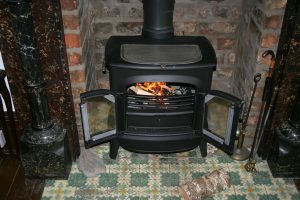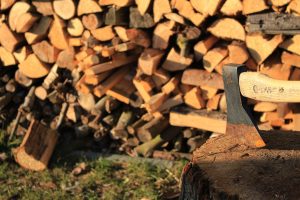Slowly but surely it’s getting cold – the nights are already so fresh that people like to switch on the heating.
A wonderful alternative to normal heating is a wood-burning stove, especially during the transition periods.
The warmth generated by the fire is quite different and in combination with the sight on the cracking and burning logs it usually gives us a wonderful, comfortable feeling of well-being.
However, you should also be well informed about what to consider when buying and installing a stove.
First the facts about the stoves:
A wood-burning stove, also known as a “Swedish stove” or “fireplace stove”, belongs to the broad field of wood-burning stoves. These stoves are offered in different variants, e.g. with so-called soapstone, which stores the warmth longer.
The range of possible applications is just as wide. You can use it to heat only individual rooms, but you can also install it as part of a so-called hybrid heating system, or connect it to a solar thermal system, for example. A specialist can offer you competent support.
Particularly in the transitional periods between spring and summer as well as autumn and winter, an additional wood-burning stove reduces heating costs considerably.
Wood is one of the renewable raw materials and so you can heat with a stove in an environmentally friendly and low-emission way. And compared to other fossil fuels such as oil or gas, it is even very inexpensive.
However, when firing with wood, you must make sure that it has been stored long enough. If the humidity is too high, the wood in the fireplace will burn uncleanly. This reduces the calorific value of the wood as well as the nominal heat output and the device is unnecessarily loaded.
And, of course, fire protection must also be taken into account here!
The reasons for the state fireplace regulations lie in preventive fire protection: Privately operated fireplaces are basically a potential source of danger for the general public.
For this reason, regulations have been drawn up to ensure a minimum level of safety for the individual stove owner, but also for other persons and buildings.
These distances must be observed when setting up the stove:
- 20 centimetres between back and wall
- 30 centimetres on each side
- 65 centimetres on both sides, for side windows
- 20 centimetres between stove/smoke pipe and ceiling
- 80 centimetres in front of the front glazing
Flammable objects must be protected from overheating by non-combustible insulation at smaller distances. In addition, the flammable floor must be protected from flying sparks and fire hazards by an appropriate stove base plate before the stove is connected.
Here you can download a PDF summary of the regulations for wood-burning stoves .(Sorry, only available in German)
Other stove regulations, for example, regulate the maximum fine dust emissions from stoves to ensure adequate protection of health and the environment.
The stove regulations should therefore be discussed individually on location. The responsible district chimney sweep is the correct contact.
By the way: We advise stove users to install a carbon monoxide detector. Even small amounts of inhaled carbon monoxide lead to irreversible heart and brain damage, larger amounts to death.


